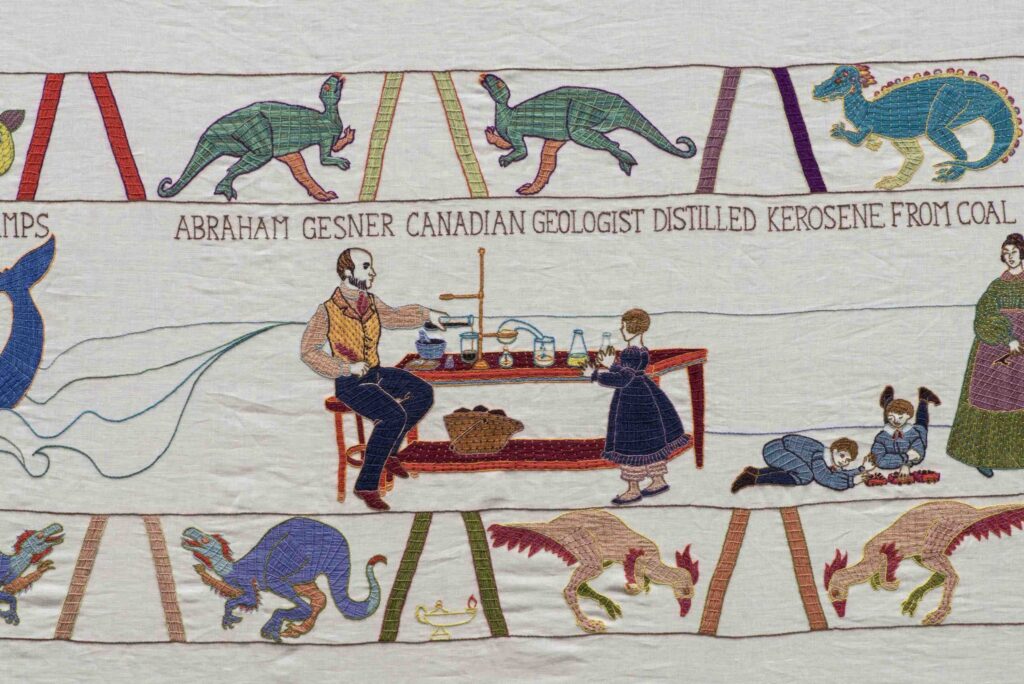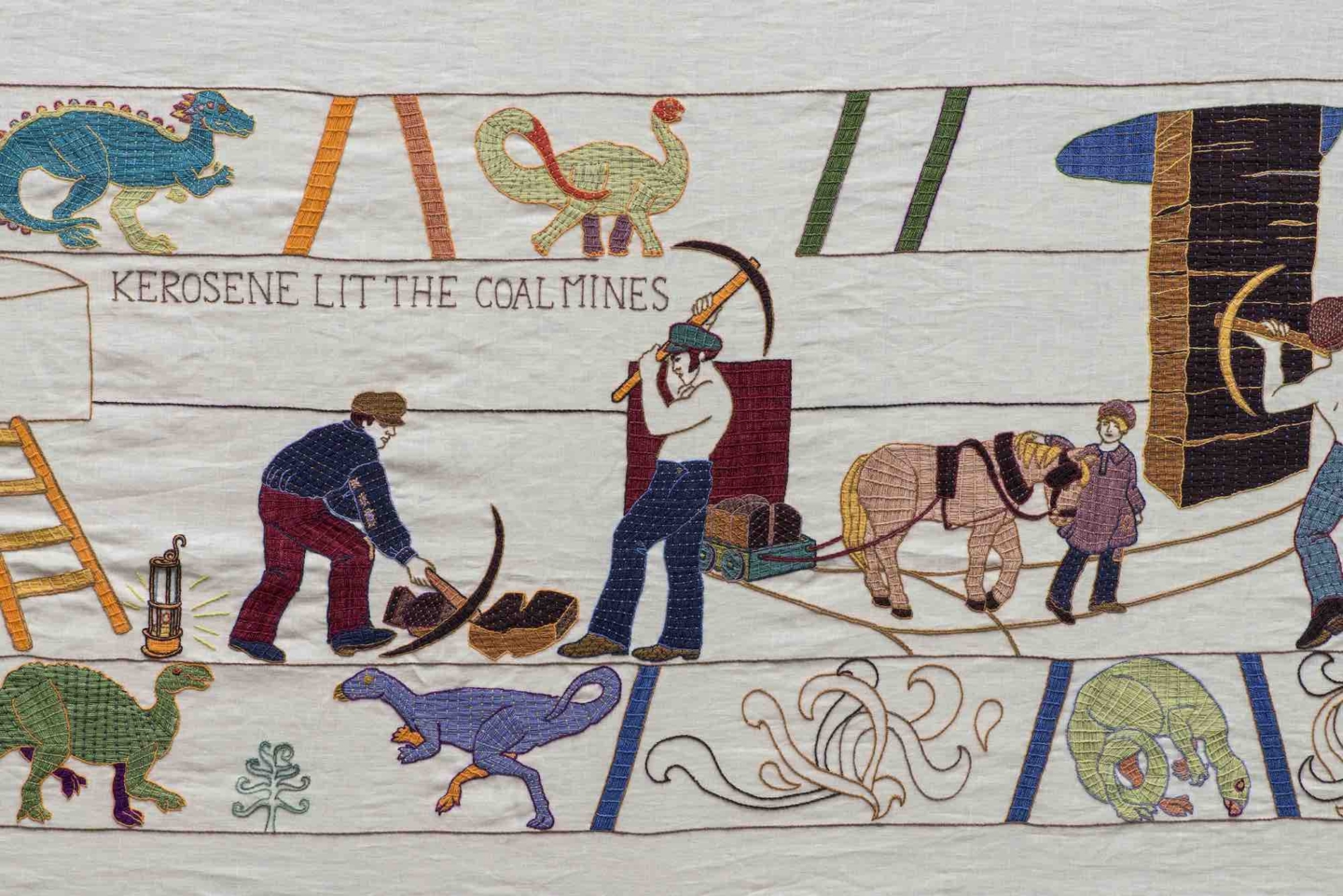Amitav Ghosh on Sandra Sawatzky’s Black Gold Tapestry
For me, Sandra Sawatzky’s Black Gold Tapestry comes as a great gust of fresh air. To begin with, there is the medium, one that creates a bridge between humans and the realm of plants. A tapestry (made from silk, wool, and flax) is one of the oldest forms of art, with a history that Sawatzky self-consciously invokes with her allusions to the medieval Bayeux Tapestry (circa 1070). Then there are the figures: today many of us have become so accustomed to abstractions in contemporary art that any kind of figurative work comes almost as a shock. Yet, how are we to connect to the many non-human worlds that surround us if not through figurative imagery? And, no less than in the Bayeux Tapestry, are Sawatzky’s human figures inextricably entangled with non-human beings of many kinds.
Particularly interesting to me is the interplay of text and image, which alludes not only to the Bayeux Tapestry but also to many other traditions, such as Chinese scroll paintings and Persian and Indian miniatures, all of which served as vehicles of storytelling. But today, to bring text and image together in the service of a story is nothing short of a radical act, because it insists that the meaning of a work of art may not lie entirely within its own frame, but outside, in the world, and in the past.
And this, precisely, is what is most striking about The Black Gold Tapestry: it creates a genealogy for humanity’s present predicament by placing it within history. This, too, is an increasingly radical act in a world where terms like “the Anthropocene” suggest a complete rupture with the past. No wonder then that in contemporary art and literature the planetary crises of our times are almost always imagined in relation to the future. Yet, as Sawatzky reminds us, the truth is that these crises are rooted in history.

About Sandra Sawatsky
Canadian artist Sandra Sawatzky conveys the epic global history of oil in her Black Gold Tapestry, nearly 220 feet of hand embroidery stitched over nine years. A trained filmmaker and longtime environmentalist, Sawatzky wanted to create a kind of “film on cloth,” and selected as her topic the saga of discovery, invention, and disaster contained in humanity’s relationship with oil. Sawatzky continues to create politically engaged embroidery from her home in Calgary, Alberta. Learn more about the The Black Gold Tapestry at theblackgoldtapestry.com and explore the entire work online through a virtual tour.
About Amitav Ghosh

Amitav Ghosh is an Indian-born writer of acclaimed fiction and nonfiction. His work has been translated into more than thirty languages and his essays have appeared in The New Yorker, The New Republic and The New York Times. The Great Derangement: Climate Change and the Unthinkable (Cambridge University Press, 2016) directly addresses our inability to grasp the scale of climate catastrophe and encourages imaginative approaches to the future of human existence. His most recent book is The Nutmeg’s Curse: Parables for a Planet in Crisis (University of Chicago Press, 2021).

